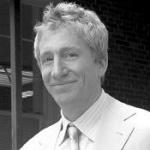It’s no secret that wealth inequality has grown, both in the US and abroad over the past several decades (after moderating somewhat in the post-WWII era). What has been particularly notable about the work of Emmanuel Saez, Professor of Economics at the University of California, Berkeley, is the quantification of that inequality. His work, done with Thomas Piketty, includes tracking the incomes of the poor, middle class and rich around the world.
How has Saez managed to measure this growth in inequality? In the US, he has done so largely by tracking the Flow of Funds and cumulative tax returns reported by individual taxpayers. On the basis of these measurements, Saez has found that wealth inequality has considerably increased at the top over the last three decades. By his estimates, wealth inequality is making a comeback, with the top 0.1% wealth share almost as high in 2012 as in the 1916 and 1929 peaks and three times higher than in the late 1970s. Despite population aging, however, the rich are younger today than half a century ago: in the 1960s, top 0.1% wealth holders were older than average, which is not the case anymore today.
The key driver of the rapid increase in wealth at the top is the surge in the share of income, in particular labor income, earned by top wealth holders. Income inequality has a snowballing effect on the wealth distribution: top incomes are being saved at high rates, pushing wealth concentration up; in turn, rising wealth inequality leads to rising capital income concentration, which contributes to further increasing top income and wealth shares. The core finding of Saez is that almost all of this increase is due to the rise of the share of wealth owned by the 0.1% richest families, from 7% in 1978 to 22% in 2012, a level comparable to that of the early twentieth century.
Although the top 0.1% is a small group—it includes about 160,000 families with net assets above $20 million in 2012—carefully measuring its wealth is important for several reasons. First, questions of morality aside, economies tend to function at less than optimal levels when an increasing share of national wealth goes to an increasingly small amount of the population (especially when that group has the highest propensity to save). Second, the increasing fraying of the social contract has led to a profound political polarization, manifesting itself through the rise of nationalist/neo-fascist parties and political figures.
The takeaway from the Saez interview is that this rapid increase in wealth at the top is a result of the surge in the share of income, and that the bottom has been able to save less and less due to low income growth. This may have been exacerbated by financial deregulation leading to some forms of predatory lending, and growing behavioral biases in the saving decisions of middle-class households.


